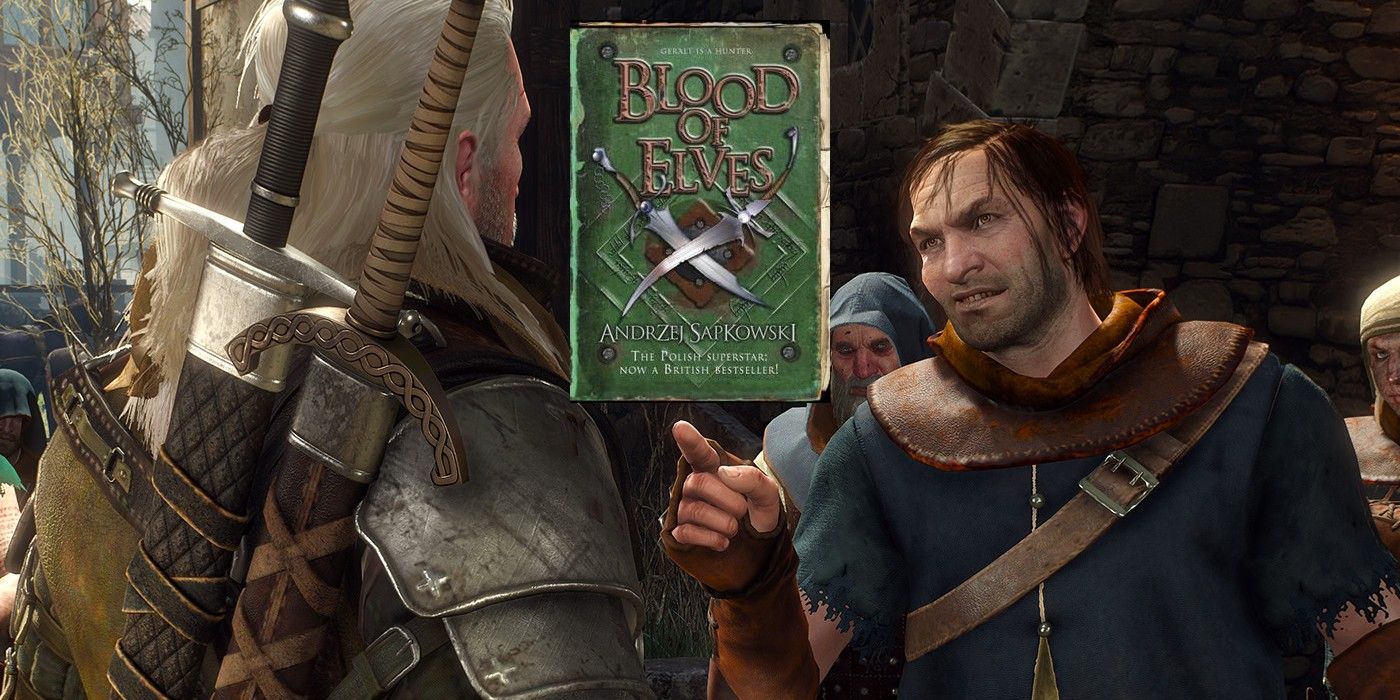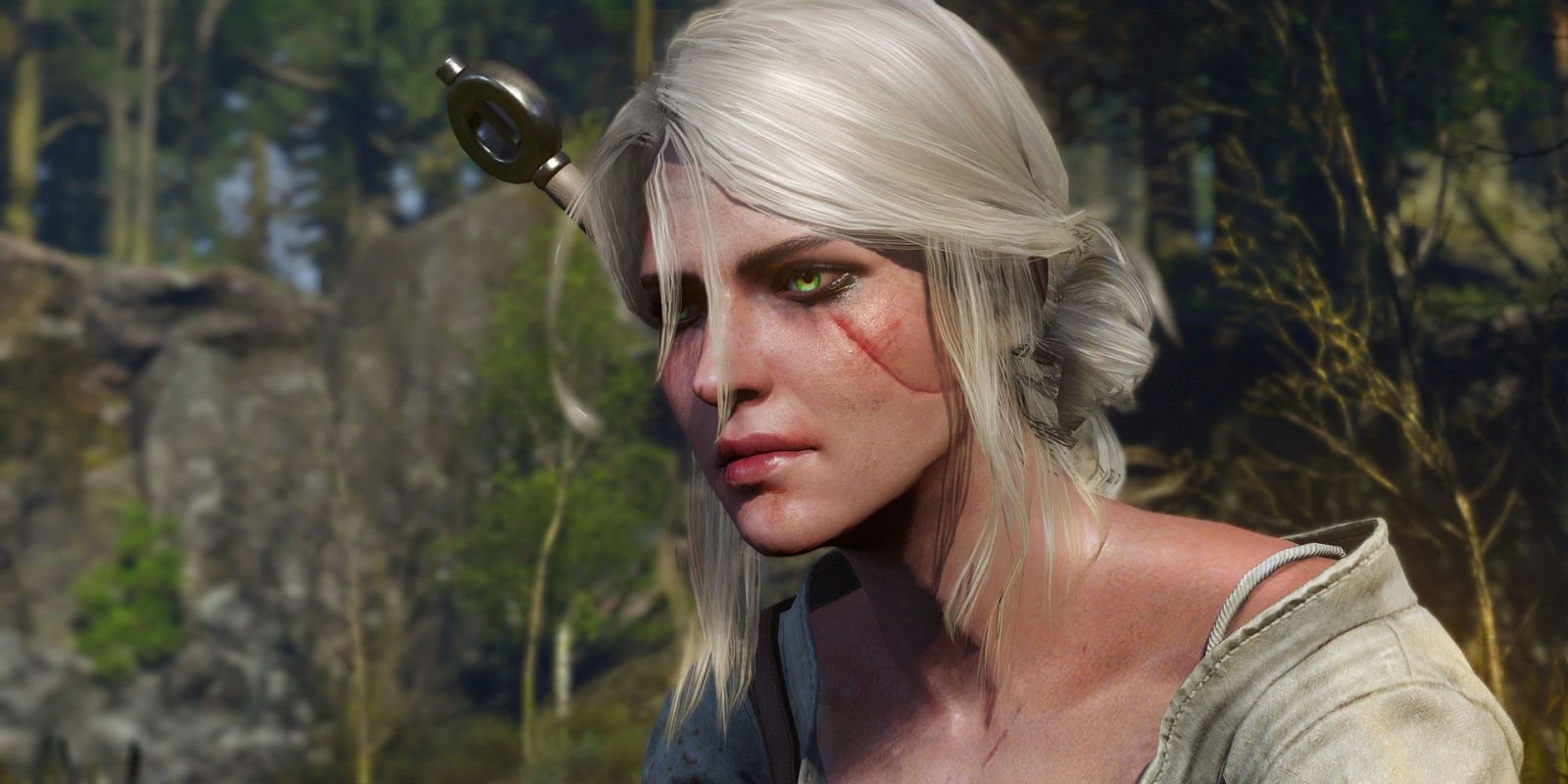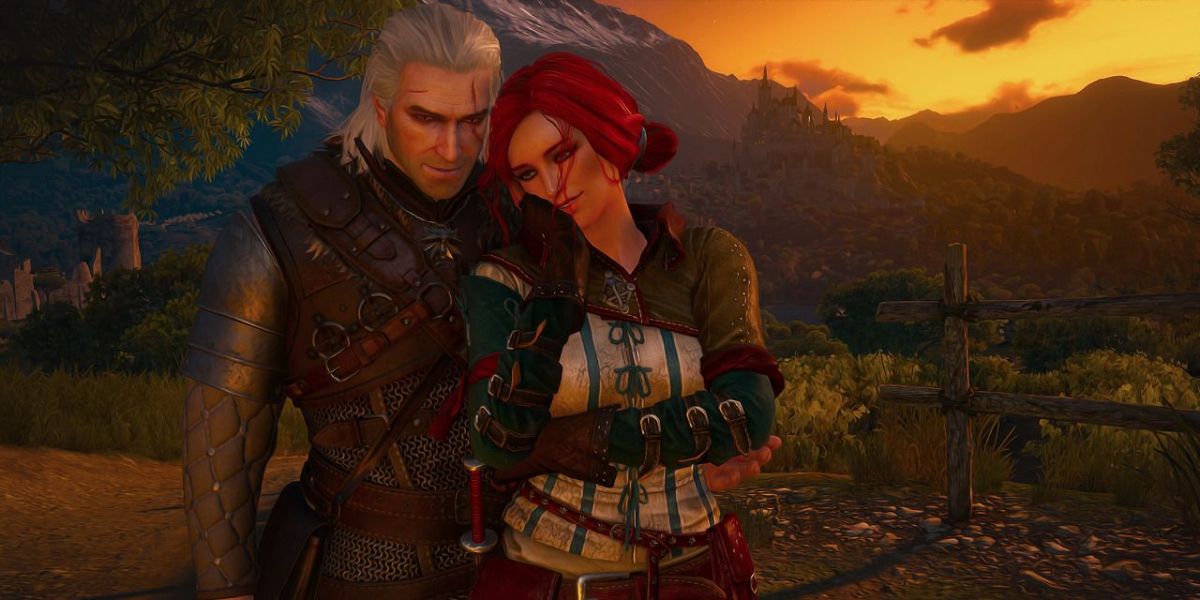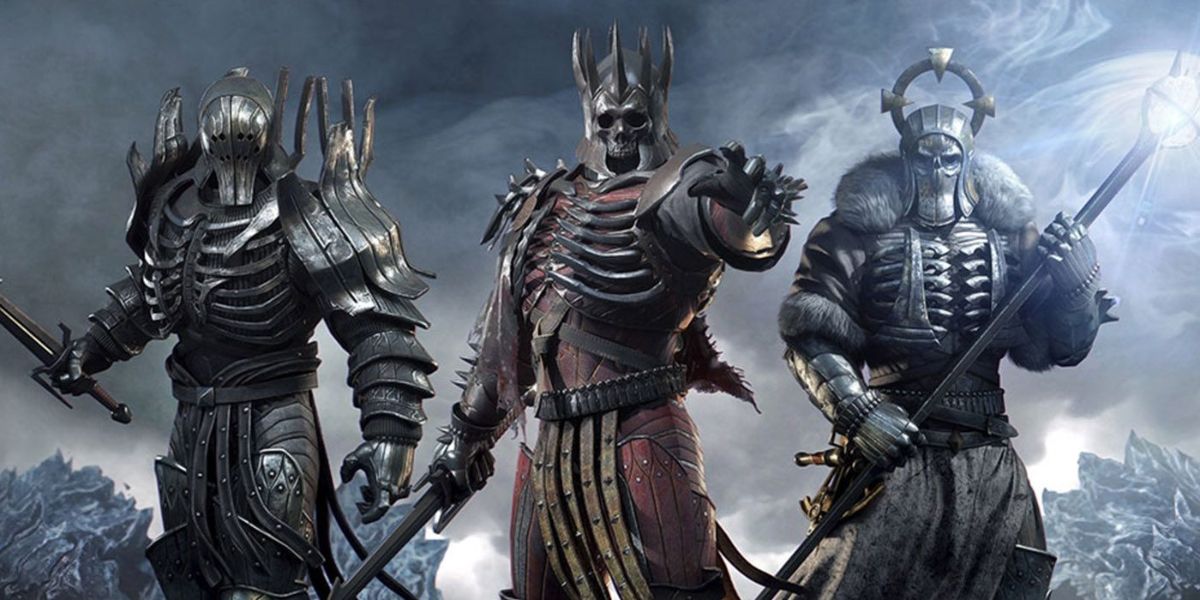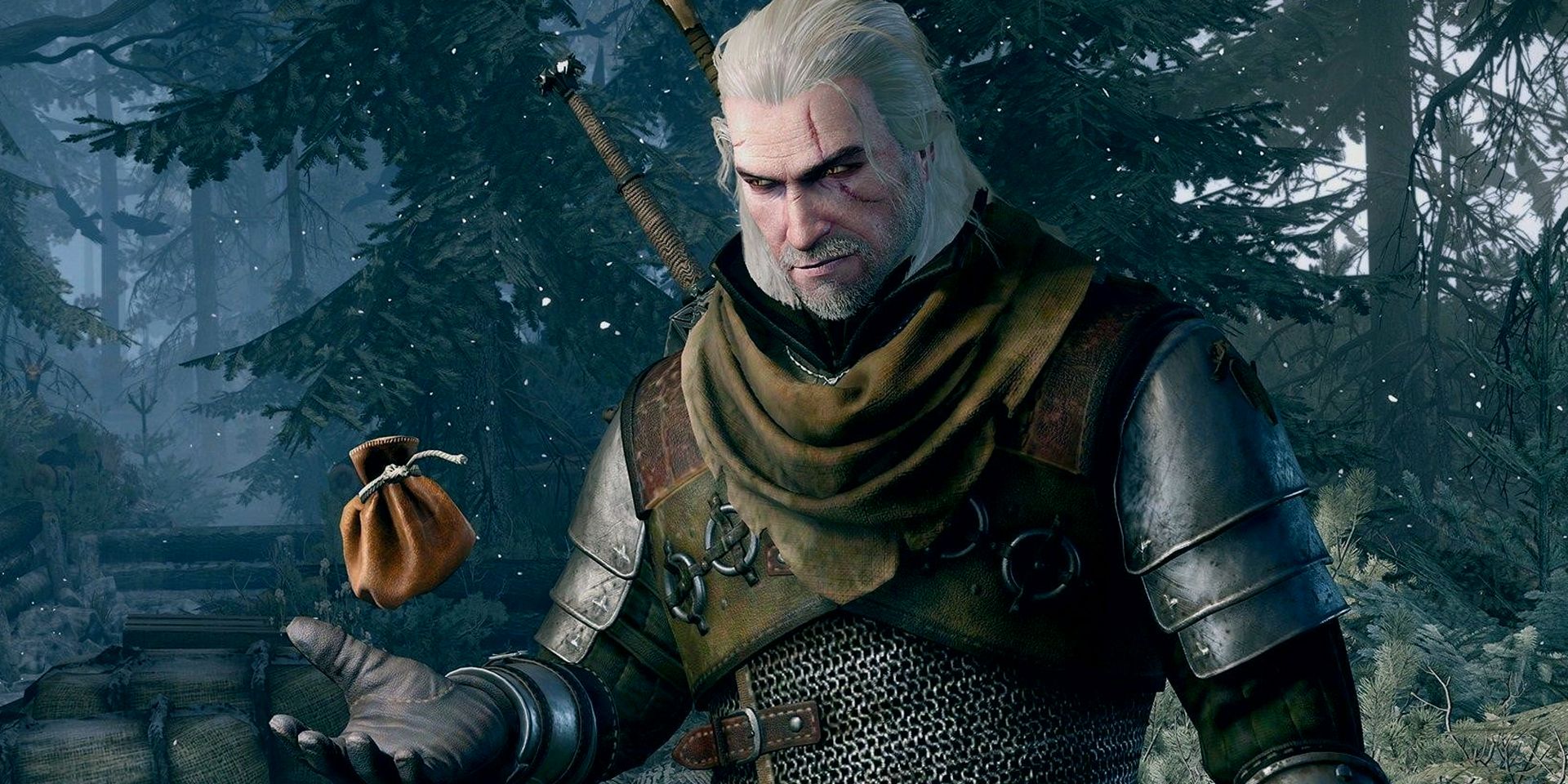The Witcher 3: Wild Hunt is a well known action RPG, developed by CD Projekt Red, that draws aspects of characters, mythos, and plot from the fantasy novel series The Witcher by Andrzej Sapkowski. However, the game differentiates from the books particularly in regards to characterization of key figures, and the emphasis and omission of certain plot points. The Witcher is a popular franchise, having recent Netflix productions including an eponymous series starring Henry Cavill and an animated spin-off film, Nightmare of the Wolf, featuring the voice of Theo James.
Wild Hunt follows two previous games: The Witcher and The Witcher 2: Assassins of Kings, which are all set following the events of the main saga. Throughout the game trilogy, players control Geralt of Rivia as he undertakes quests as a supernatural monster hunter, known as a Witcher. The games are viewed as a kind of fan fiction sequel to the Witcher book and the events within are non-canon. However, the game continues the theme of destiny from the books; a destiny that will always bring Geralt together with Cirilla, an orphaned princess from the kingdom of Cintra and an extremely powerful magical being. Known as Ciri, she and Geralt are bound to protect each other through destiny and the Law of Surprise, frequently losing and finding each other throughout both the books and games.
Despite being an important main character of the franchise, Ciri in The Witcher 3 is quite different to her book self. The Witcher 3's Ciri appears to be a watered-down version, portrayed as a strong young woman learning about her powers and position in the world, who often puts others before herself. However, in the books she is a bit more unhinged.
How Ciri Is Different In The Witcher Books
At one point, Ciri joins a group of bandits and takes part in the murdering of innocent people. By excluding these traits from Ciri in The Witcher games, CD Projekt Red cleverly made Ciri's character more likeable and relatable. Another huge difference from the Witcher books is Ciri's relationship with Yennefer of Vengerberg, powerful sorceress and Geralt's lover; Book Ciri is pretty much Yennefer's adoptive daughter, but this close, loving relationship is not really touched on in any game dialogue. Yenn's emotional, motherly guidance is certainly lacking in The Witcher 3 as she acted as a source of comfort and advice for the troubled princess, relating to her when learning to control intense magical abilities.
How Triss Is Different In The Witcher Books
The character of Triss Merigold is portrayed on an entirely different path in The Witcher 3 than the book saga. Triss is a powerful mage specializing in potion making, and is ironically allergic to magical potions herself. In the books, she helps train Ciri until she realizes her powers are too complex and summons her good friend, Yennefer, to take over. Triss briefly couples with Geralt despite her knowledge of his storm relationship with Yenn, an act which the Witcher regrets. Triss is a major character of the first two games, though takes a back seat in The Witcher 3 following Yennefer's introduction.
Game Triss deviates from the book as she is romanceable in all three games, whereas Book Triss' unrequited love for Geralt is the cause of considerable tension. This seems an odd choice by the developers considering the destiny surrounding Geralt, Yennefer, and Ciri as a family, and seems to only have been added to give Witcher 3 players romantic options.
How The Wild Hunt Is Different In The Witcher Books
The major antagonist of The Witcher 3 is the Wild Hunt; based on European folkore, these supernatural spectral riders act as an omen for war, plague, and other bad things. In The Witcher franchise, they are a group of Aen Elle elves, and in The Witcher 3 they hunt Ciri to utilise her immense magical powers. Considering their pivotal role in the games, one would expect this group to maintain a substantial position in the books. However, this is not the case as while Book Ciri does meet their leader, Eredin, Book Geralt never interacts with the Wild Hunt and they are only briefly seen.
Another surprising deviation from the books is the nature of Geralt's career. Monster hunting is not as lucrative a profession as the game makes out. Book Geralt is often brooding over the fact that he hates being a Witcher, citing that he struggles to find work and often finds himself starving and without shelter. However, in the games there is an abundance of monsters and much coin to be claimed.
How Geralt Is Different In The Witcher Books
Book Geralt also operates by the code that he will only kill monsters that pose immediate threat to humans; if Geralt finds intelligence and the monster can be reckoned with, Geralt will abandon the bounty contract and try to help the creature limit its harmful ways. The Witcher 3: Wild Hunt gives the player the opportunity to make Geralt deviate from his code and slay as many monsters as they wish. Further, Game Geralt utilizes Signs a lot in combat, which are basically magical abilities used to ignite, push, and Jedi mind-trick NPCs, amongst other things. However, in the books Signs are thought to be crude spells that anybody can learn and Geralt only utilizes them as a last resort, preferring to make use of his weapons. That being said, the Witcher books reveal that only certain monsters require the use of a silver sword to damage them, contrary to the game which emphasizes this weapon for monstrous foes.
Perhaps the most striking difference between The Witcher 3 game and the books is - (Huge Spoiler Ahead) - that Geralt and Yennefer are (probably) dead. As the games are set after the last book, The Lady of the Lake, which describes how the Witcher and his sorceress lover met their end, it is not quite clear how they are alive in the games. Ciri is a Child of the Elder Blood, a prophesied being known as a Source capable of manipulating time and space. In the final Witcher book, she escapes to an alternate Arthurian reality in which she recounts the death of her mother and father figures to Galahad, a Knight of the Round Table. Thus, it may be that the games are taking place in an afterlife of Ciri's creation, or perhaps that Ciri managed to heal or resurrect her adoptive family.
Whatever fans choose to believe, this is nevertheless a deviation from the bittersweet ending of the books. Yet, The Witcher 3 references this as Geralt states "I was bold and brash once, like you. Then I took a pitchfork in the gut. I almost died." This is exactly how Geralt's death is described in The Lady of the Lake at the pogrom in Rivia, dying defending his nonhuman friends against rioting violent humans (and adds a reference to the Skyrim adventurer meme). So, despite varying from the books enough to include dead characters without an absolute explanation, CD Projekt Red provides subtle Easter Eggs for book fans to enjoy.
Overall, The Witcher 3: Wild Hunt is true to the books in relation to its geopolitics, racism issues, and mythos. The game deviates in surprising ways in relation to characterization and plot points, perhaps the most surprising of which being Geralt's appearance. The white-haired, yellow-eyed Witcher in the books is not quite Henry Cavill, and is in fact described as "ugly", "skinny" and possessing an "unpleasant voice." His scars in the game are well-healed and aesthetically pleasing, making the protagonist look like a hardened badass; Book Geralt's scars are described as sinewy and hideous. Book Geralt does not even have his unique eye scar! Nevertheless, there is no mistaking Geralt of Rivia, whose recognizable image has now been transferred to the Netflix adaptation.

